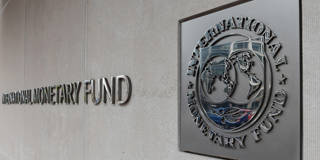Policymakers increasingly tout multilateral development banks as being uniquely positioned to address today’s pressing global challenges, particularly debt crises in the developing world. But their lending mostly benefits middle-income countries rather than the lower-income countries that need it most.
WASHINGTON, DC – Multilateral development banks (MDBs) have become the darling of policymakers nowadays. In a recent speech, US Treasury Secretary Janet Yellen called on the World Bank and other international lenders to support developing countries struggling with the effects of rising inflation and aggressive interest-rate hikes. And a recent independent report commissioned by the G20 concludes that these institutions are uniquely positioned to help governments achieve the United Nations’ Sustainable Development Goals.
The G20 report argues that MDBs could expand their lending without hurting their AAA credit ratings, were it not for excessive capital-adequacy requirements that limit lenders’ ability to take risks. But which countries would benefit the most from an increase in multilateral financing?
While multilateral development banks play a critical role by providing long-term loans at concessional interest rates to low-income countries (LICs), the overwhelming majority of their financing goes to middle-income countries (MICs). A recent OECD report finds that 70% of MDB loans went to MICs in 2020, following a large increase in lending to lower-middle-income countries (LMICs).

WASHINGTON, DC – Multilateral development banks (MDBs) have become the darling of policymakers nowadays. In a recent speech, US Treasury Secretary Janet Yellen called on the World Bank and other international lenders to support developing countries struggling with the effects of rising inflation and aggressive interest-rate hikes. And a recent independent report commissioned by the G20 concludes that these institutions are uniquely positioned to help governments achieve the United Nations’ Sustainable Development Goals.
The G20 report argues that MDBs could expand their lending without hurting their AAA credit ratings, were it not for excessive capital-adequacy requirements that limit lenders’ ability to take risks. But which countries would benefit the most from an increase in multilateral financing?
While multilateral development banks play a critical role by providing long-term loans at concessional interest rates to low-income countries (LICs), the overwhelming majority of their financing goes to middle-income countries (MICs). A recent OECD report finds that 70% of MDB loans went to MICs in 2020, following a large increase in lending to lower-middle-income countries (LMICs).